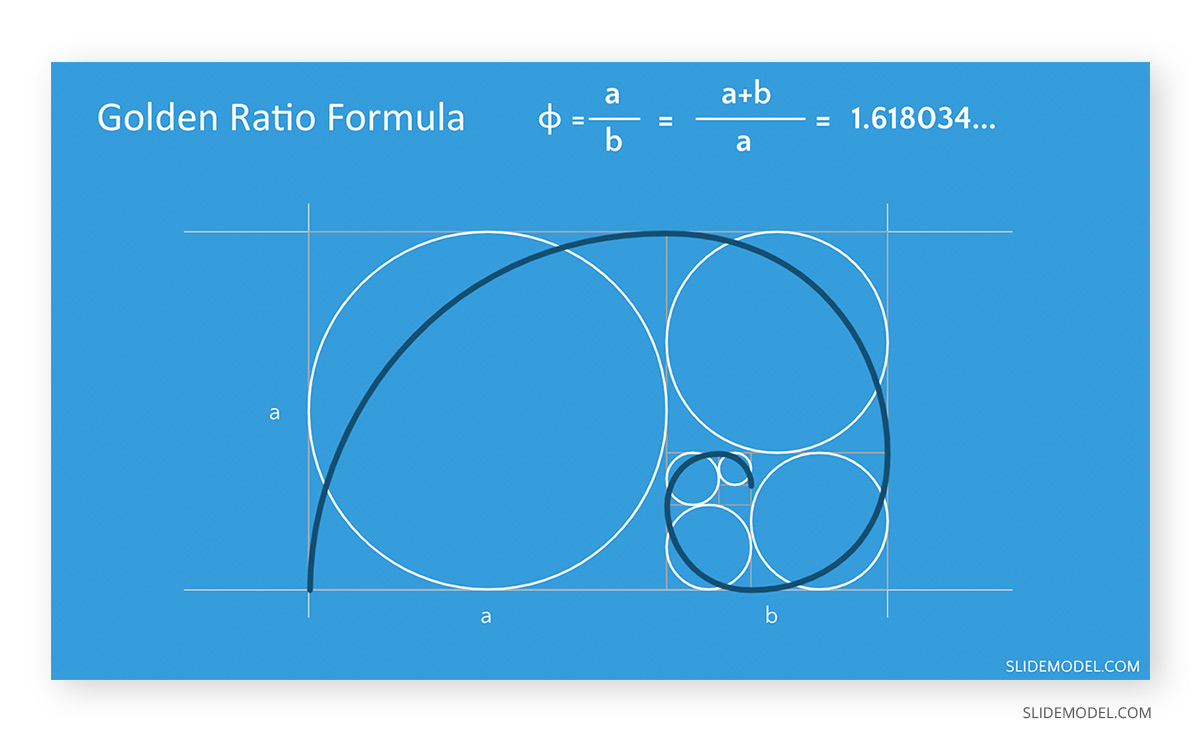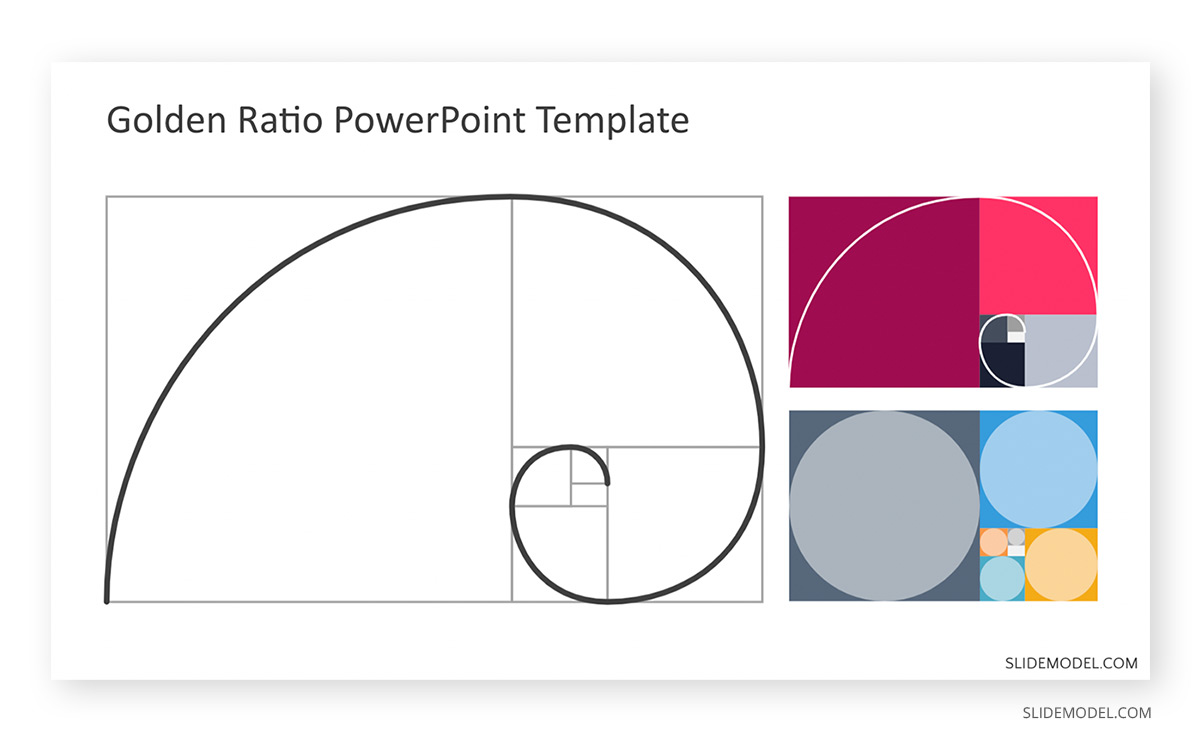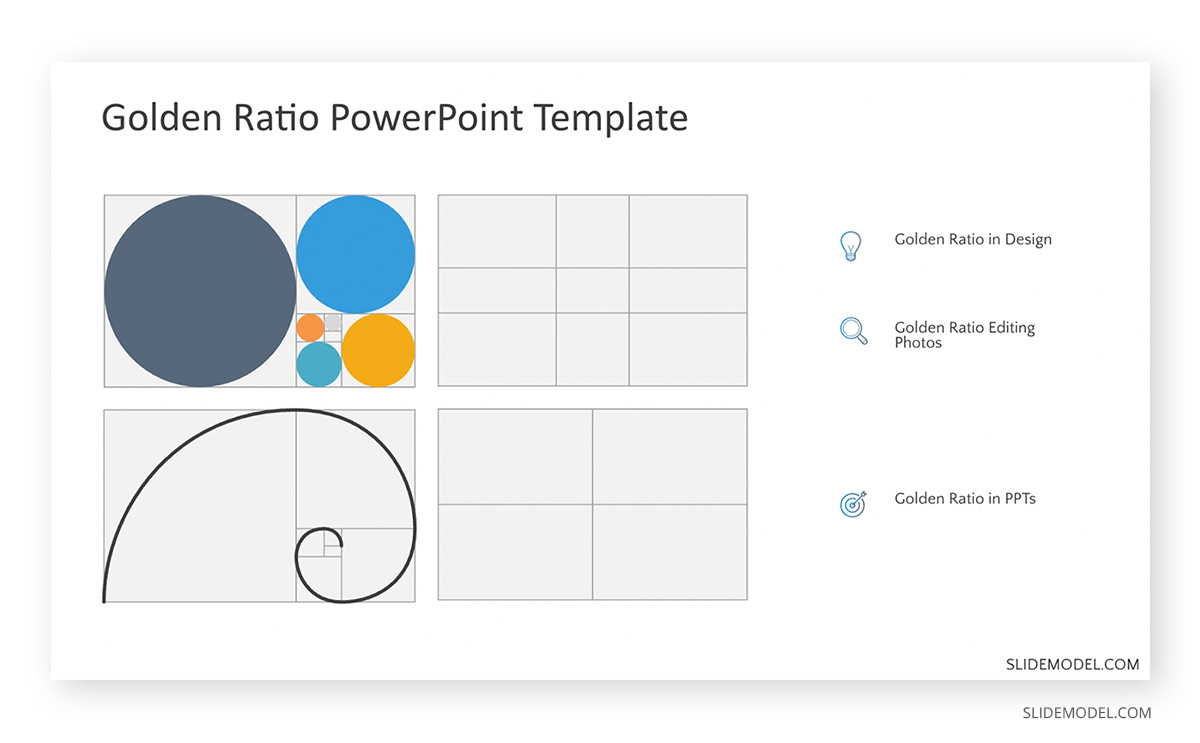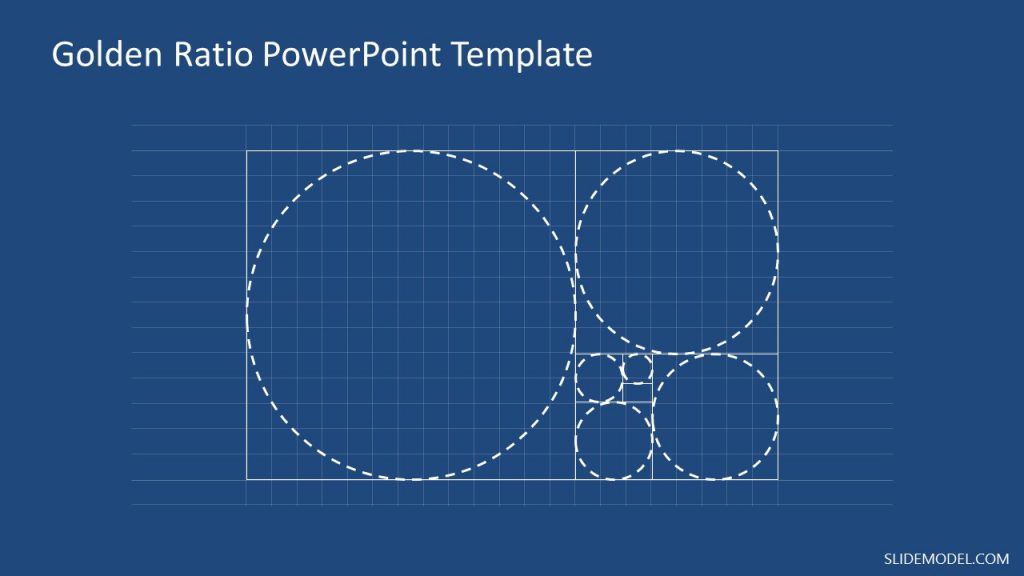
What makes something beautiful? Could there be a formula for beauty, and is it possible to calculate the possibility of designing a beautiful building, painting, or digital art? It turns out there is a way to calculate all these things using the Golden Ratio (1.618). But it’s not just beauty that resonates around this magical formula that is found everywhere we look. It ranges across the formation of flower seeds to hurricanes and even galaxies.

What is the Golden Ratio?
The Golden Ratio, also called the Golden Mean or Golden Section, is found in nature, and when used in the design, it makes things look visually pleasing. This mathematical ratio occurs when a line is divided in two, where the long part (a) when divided with the small one (b) results in being equal to the total of (a) + (b) divided by (a). This is equal to the ratio of 1.618.
The Golden Ratio occurs both in nature and in human design. The Pyramids of Giza, the Mona Lisa, and the faces of famous people deemed attractive all fall under this ratio. But the ratio is found in more than just art, from the spirals of a hurricane or waves in the sea to the spirals of the Milky Way are all engulfed in this very ratio. The Golden Ratio is also found in the human body, occurring between different body parts.
When it comes to the human face, the ratio is used as the Gold Mask. This is the ideal proportion of the human face that is considered attractive by human beings. Many famous actors have been found to have the Golden Ratio face. However, some of that is also attributed to plastic surgery. Since many people also opt for facial surgery using the same mathematical calculation to give their face the ratio that falls within the domain of the Gold Mask.
Who Created the Golden Ratio?
While the Golden Ratio is found in the design of the Great Pyramid of Giza as early as 2560 BC. It is not known if the ratio was deliberately used in the design of the pyramid. The oldest examples of the discovery of the Golden Ratio are found in ancient Greek civilization. Due to its recurrence in geometry, many ancient Greek mathematicians studied the Golden Ratio. Some of the earliest studies of the ratio are credited to names like Pythagoras, Euclid, and Plato in ancient Greece, followed by Egyptian mathematician Abu Kamil between the 9th and 10th century AD during the Islamic Golden Age. Among prominent names, Leonardo of Pisa (Fibonacci) is credited with studying the ratio in the following millennium and Johannes Kepler during the middle ages.
Among modern mathematicians, Martin Ohm, a German mathematician, is credited with noting the relationship between the Fibonacci numbers and the Golden Ratio. His book, published in 1815, titled ‘Die Reine Elementar-Mathematik’ or ‘The Pure Elementary Mathematics,’ is the first known use of the concept. Back then, he used the term Golden Section to describe the Golden Ratio. Nearly a hundred years later, American mathematician Mark Barr used the 21st letter of the Greek alphabet Phi for the ratio, which British writer Theodore Andrea Cook referenced in his book ‘The Curves of Life’ published in 1914. More recently, British mathematician Roger Penrose during 1973 and 1974, developed what is known as the Penrose tiling, which is a pattern designed using the Golden Ratio.
Much about the history of the Golden Ratio and its use across human civilization has been described by Alfred S. Posamentier in his book The Glorious Golden Ratio.

How does the Science of Proportion Works?
The Golden Ratio is derived from the Fibonacci sequence. This sequence naturally occurs in nature, be it in tree leaves, seashells, or even human faces. The sequence is also commonly found in architecture, design, and artwork. Below is an example of the Fibonacci sequence.
0+1, 1+1, 1+2, 2+3, 3+5, 5+8, 8+13This results in a sequence as the one shown below.
0, 1, 1, 2, 3, 5, 8, 13, 21Golden Ratio in Design
Historically, artists have been known to have a bias towards the Golden Ratio. While visual artists and people engaged in the beauty industry might use this ratio, many people who design visually appealing content often do so unconsciously. Scholars dispute whether the ancient template of Athena, the Parthenon’s (432 BC), has been designed using golden rectangles. Human beings can have a certain bias towards the Golden Section by designing in a sequence that conforms to the ratio, such as triangles, pentagons, spiral shapes, etc.
To make your content visually pleasing, you can incorporate the Golden Ratio in your design by using the golden triangles and spiral mentioned above. Other methods can be to incorporate the Gold Mask by making a shape symmetrical.
Using the Golden Ratio in Graphic Design
The video shows you how to design a logo using the Golden Ratio using Adobe Illustrator. The use of the ratio can be incorporated by using shapes and proportions that fall within the area of the ratio. To make a logo using the Golden Ratio, you can use online tools. One simple way to apply the Golden Ratio when designing a company logo is to set the dimensions of your canvas to 1:1.618. For example, take a 1600-pixel width layout and divide it by 1.618, and then you will get 989, which will be the height of the layout or canvas size.
Using the Golden Ratio when Editing Photos
You can learn about designing logos using the Golden Ratio by using Adobe Photoshop. Even if you’re using a different application for editing your pictures, It can be quite helpful.
Golden Ratio in PowerPoint Presentations
Using the design tips mentioned above, you can design and use content in PowerPoint that falls within the Golden Ratio. The PowerPoint template given below gives slides that depict the use of this ratio. The circles and triangles are shown in the template conform to the ratio. You can not only use this template to discuss the Golden Mean but also to use it as a stencil to design your slides by using the slides for your layouts, mapped to the magical ratio itself.

FAQs
Who discovered the Golden Ratio?
While the Golden Ratio can be traced back to ancient Greek mathematicians like Pythagoras and Euclid, it has been studied by others over centuries, including Fibonacci, who connected it to his famous sequence. In the modern era, mathematicians like Martin Ohm and Roger Penrose contributed further insights into its applications.
Where is the Golden Ratio found in nature?
The Golden Ratio appears in many natural phenomena, such as:
– The arrangement of leaves on a stem.
– The spirals of seashells and hurricanes.
– The proportions of the human body and face.
– The structure of galaxies.
How is the Golden Ratio used in design?
The Golden Ratio is used to create visually pleasing and balanced designs. It can be applied in:
– Graphic Design: Designing logos, layouts, and visual compositions.
– Photography: Cropping and aligning subjects within the frame.
– Architecture: Proportional planning of structures.
– Golden ration Presentations: Structuring slides to enhance visual appeal.
How does the Golden Ratio relate to the Fibonacci sequence?
The Golden Ratio is derived from the Fibonacci sequence, where each number is the sum of the two preceding numbers (e.g., 0, 1, 1, 2, 3, 5, 8…). As the sequence progresses, the ratio of consecutive numbers approaches 1.618, representing the Golden Ratio.
Why is the Golden Ratio significant in art and architecture?
The Golden Ratio has been historically used to create harmony and balance. Famous examples include:
– Art: Leonardo da Vinci’s “Vitruvian Man” and the Mona Lisa.
– Architecture: The Parthenon in Greece and the Pyramids of Giza.
– Modern Design: Logos and visual branding.
What is the Gold Mask in relation to the human face?
The Gold Mask refers to a template based on the Golden Ratio used to define the ideal proportions of a human face. It is often associated with beauty standards and is sometimes used in cosmetic surgery to achieve symmetry and balance.
Is the Golden Ratio scientifically proven to create beauty?
While the Golden Ratio is widely regarded as aesthetically pleasing, its association with beauty is subjective. It appears frequently in nature and art, suggesting a universal appeal, but not all designs or structures require it to be considered beautiful.
Final Words
It’s worth mentioning here that the debate about the Golden Ratio and its relevance is often shrouded in mystery and discourse. However, the fact that the ratio is found frequently in nature cannot be ignored. The ratio is also used by scientists, including meteorologists, biologists, zoologists, paleontologists, etc. There has also been some deliberation in the COVID-19 era about using the Golden Ratio for creating sustainable workplaces. The ratio is even used in trading and business. The sequence itself is hard to elude, as you are likely to find it everywhere, from the appliances in your house, the visuals you are routinely exposed to via TV and the Internet, to the leaves on a tree.
By better understanding the Golden Ratio, you can use it in your presentation layouts and design as a presenter to gain a visual advantage during presentations. Similarly, the ratio can be incorporated in documentation, architectural design, paintings, and artwork, or even in photography.
If you find it hard to determine how to place your designs within the ratio, you can also look at designs that might appear visually pleasing. It is quite likely that these designs when evaluated will fall under the magical number of 1.618. Replicating similar design principles can help you start incorporating the ratio naturally in your daily design tasks, making the formula as a default for your designs.



